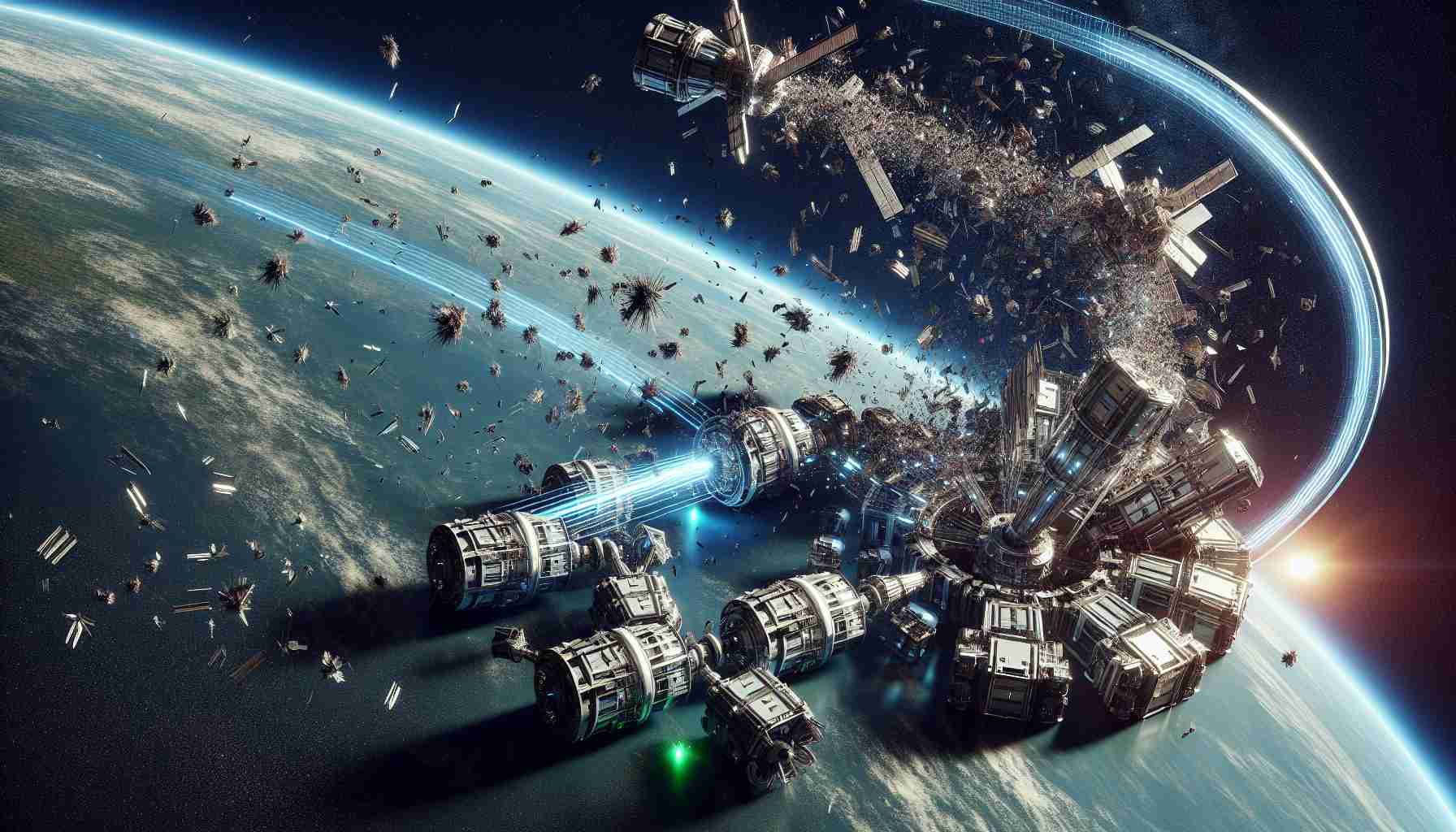A groundbreaking competition has been launched by an international space organization, offering a multimillion-dollar prize to tackle the growing issue of space debris. As space agencies gear up for extended lunar missions and exploration of Mars, innovative solutions are sought to manage waste generated during these ventures.
Unlike previous robotic missions that produced minimal waste, human expeditions to the Moon and Mars are expected to generate significant amounts of trash, ranging from human waste to discarded equipment and various unnecessary packaging. This accumulation of debris poses a critical challenge for future space missions.
In a bid to address this pressing problem, the organization is now seeking technologies that can recycle waste into useful products, supporting sustainability efforts both in space and on Earth. The competition is divided into two parts: Prototype Build focuses on developing physical hardware for waste recycling on the lunar surface, while Digital Twin challenges teams to design virtual waste recycling systems. Participants are encouraged to take part in one or both challenges, with prize money divided between the two.
Emphasizing the importance of sustainable exploration, officials note that lessons learned from the competition could benefit Earth as well. The enthusiasm for this competition stems from the potential to inspire global solutions, bringing the organization closer to achieving its goals for advanced space construction and habitation.
New Technologies Revolutionize Space Waste Management: Addressing Key Questions and Challenges
With the increasing focus on space exploration and the imminent extended missions to the Moon and Mars, the management of space waste has become a crucial aspect that needs innovative solutions. While the previous article shed light on the competition and the need for recycling technologies, let’s dive deeper into some important questions, challenges, advantages, and disadvantages associated with revolutionizing space waste management.
Key Questions:
1. How can new technologies revolutionize space waste management?
2. What are the main challenges in implementing effective waste recycling systems in space?
3. How do space agencies ensure the sustainability of space missions through waste management?
Answers and Challenges:
– One of the key challenges in space waste management is the development of technologies that can efficiently recycle different types of waste generated during human expeditions. This includes organic waste, plastics, metals, and other materials.
– Ensuring the safety and reliability of recycling systems in the harsh conditions of space poses a significant technical challenge. The systems must be able to operate effectively in microgravity environments and withstand cosmic radiation.
– Another critical aspect is the integration of waste recycling technologies with existing space habitats and infrastructure to create a closed-loop system that minimizes the need to transport supplies from Earth.
Advantages and Disadvantages:
– Advantages:
– Effective waste recycling technologies can reduce the environmental impact of space missions and enable sustainable long-duration explorations.
– Recycling waste into useful products can also help in resource conservation and reduce the reliance on regular resupply missions from Earth.
– Lessons learned from space waste management can be applied to enhance recycling efforts on Earth, contributing to a more sustainable future.
– Disadvantages:
– Developing and implementing advanced waste recycling systems in space require significant investments in research and development.
– The complexity of space waste, which can include hazardous materials and various types of contaminants, poses challenges in recycling and reusing certain items.
– There may be limitations in terms of storage space for recycled materials on spacecraft and habitats, especially during long-duration missions.
As organizations and researchers continue to explore innovative solutions for space waste management, collaborations and competitions like the one mentioned in the previous article play a vital role in driving progress in this field.
For more information on space waste management and related technologies, visit NASA’s official website.
The source of the article is from the blog coletivometranca.com.br



